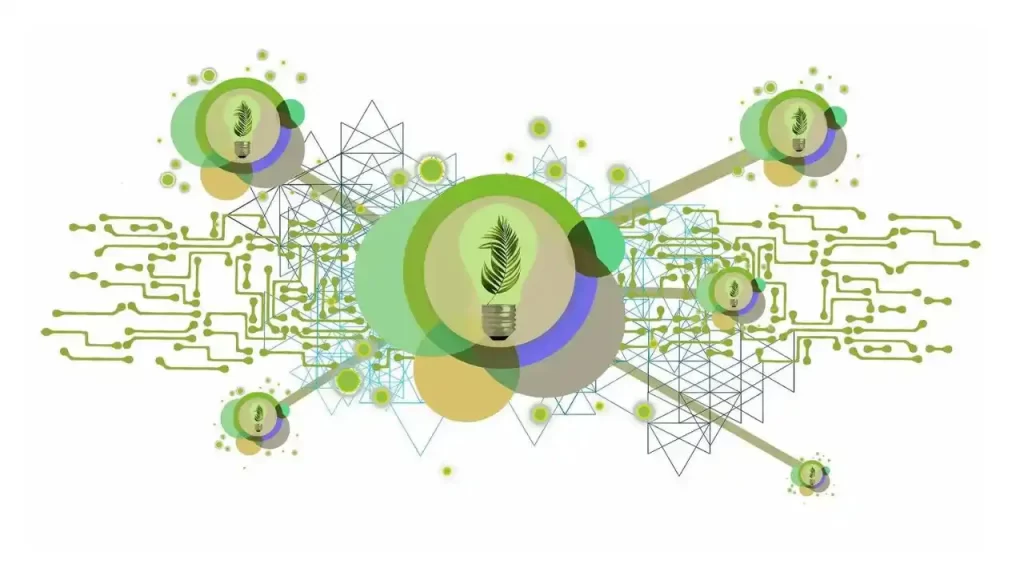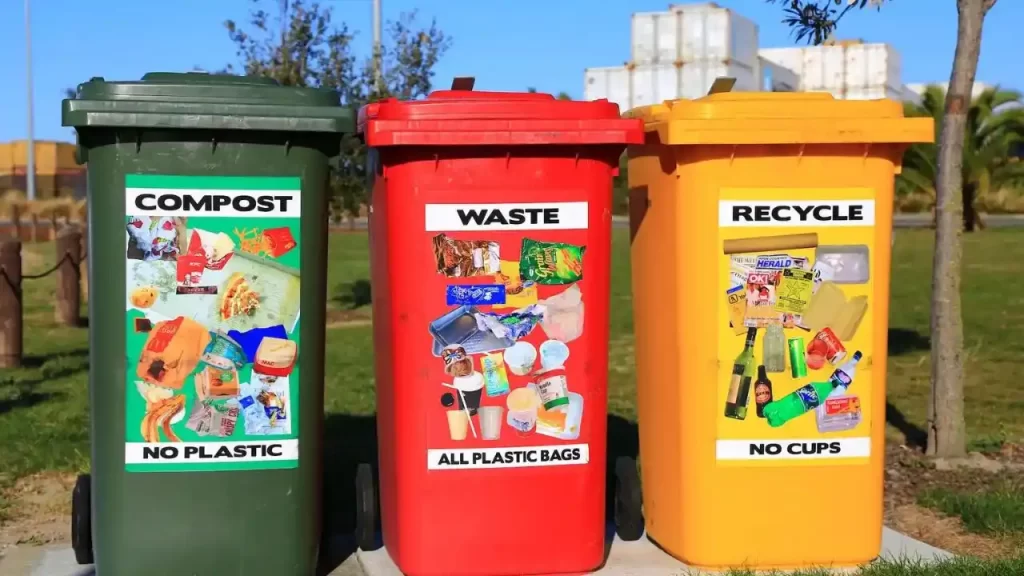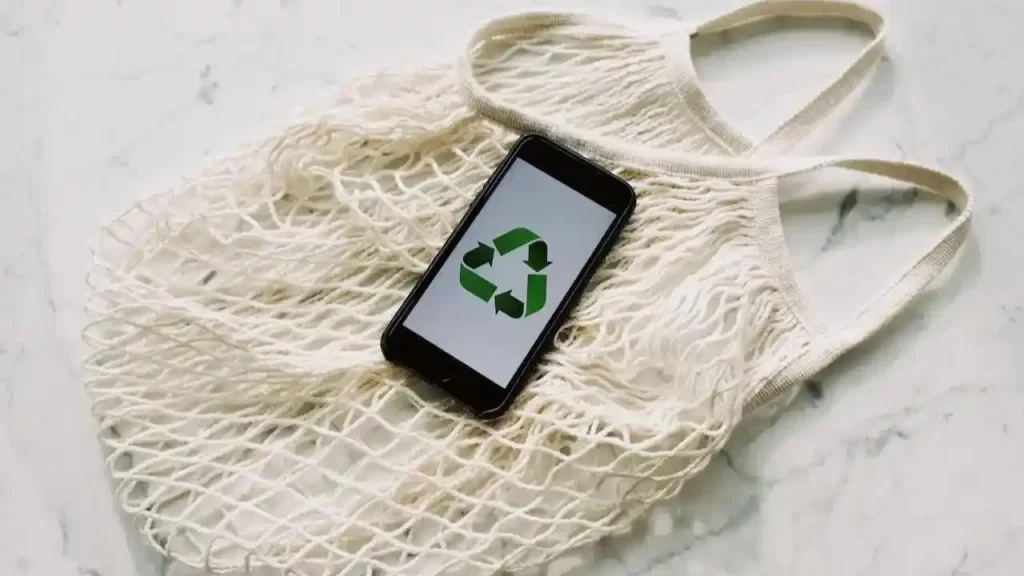No matter how big or small, organizations are switching to environmentally friendly or sustainable workplace solutions. Going green has emerged as a new business trend. So why should your business fall behind? If your business has not yet implemented sustainable workplace practices, it is time to change your strategy. In this blog post, we have put together a list of 23 simple ways to make your company more sustainable in 2025.
This blog post will serve as a sustainable office guide to guide through the journey.
What is a Sustainable Company?
Environmental consciousness has come to the limelight in recent years. If you are not familiar with a green business concept, let me elaborate on it for you.
A green business/sustainable company can be defined as a company that does more good to the environment than the harm it causes.
Its operations have the least harmful environmental impact in terms of resource exploitation, greenhouse gas emissions, and pollution.
In addition to benefiting the environment, a sustainable company also helps its employees. It promotes ethical and responsible working policies.
In short, a sustainable company adapts sustainability to reduce its impact on the globe and increase profit through legal and fairways.
You May Also Read: 5 Compelling Reasons to Choose Sustainable Travel Companies
Benefits of Going Sustainable
Recently, Ipsos surveyed more than 21000 adults from 28 countries. The results show that around 86% of the surveyed participants want the world to be more sustainable.
Companies around the world are hesitant to make the journey toward sustainability. They are unsure about the benefits of going green and achieving sustainability.
There are plenty of reasons that justify why a company should adopt sustainability into its operations. In addition to helping the planet, green approaches offer myriad benefits to the company as well.
Here are some of the benefits of going green.
a. Higher Return on Investment in the Long Run
Although going green might not look cost-effective. But it bears many fruitful results. The eco-conscious approach helps to attract new customers and offers a higher return on investment in the long run.
b. Brand Reputation
By implementing green strategies, you can elevate your business reputation. An increasing number of customers choose brands that have implemented environmental policies into their operations. Customers are more likely to purchase products of a company if it demonstrate eco-friendly practices.
c. Competitive Advantage
Sustainability impacts the purchasing decisions of customers. Deloitte UK’s recent report shows that 28% of customers stop buying certain brands due to sustainability concerns.
Hence, by employing sustainability your business will be successful in attracting new clients and gaining a competitive advantage over your rivals.
d. Cost-Effectiveness
A company can save different costs by applying sustainability to its operations. A company saves in terms of monthly power bills, operation costs, and other expenses.
e. Reduce Carbon Footprint
This is probably the most obvious and essential benefit of going sustainable. Through sustainable practices, a company can reduce its carbon footprint.
You May Also Read: Going Green on the Go: 11 Smart Strategies for Decreasing Your Travel Carbon Footprint
23 Simple Ways to Make Your Company More Sustainable

The majority of business owners have a common misperception. They consider becoming green to be a challenging task. It entails making little adjustments to your routine activities. These small efforts pay off in the long term.
Having said that, here are the 23 simple ways to make your company more sustainable in 2025.
1. Monitor Carbon Footprint

The first step is the most critical one. It involves measuring the carbon footprint of your company.
Emissions are grouped into three categories/scopes, i.e., Scope 1 (direct emissions produced directed by the organization such as on-site energy production), Scope 2 (emissions produced from purchased energy), and Scope 3 (Indirect emissions such as staff travel).
To calculate the carbon footprint of your company, you may hire an organization such as CDP, use a carbon calculator such as Carbon Trust, or you may calculate on your own using different methods such as DEFRA’S carbon conversion factors and Greenhouse Gas Protocol.
Once you know your organization’s carbon footprint, you can devise different techniques to curb carbon emissions.
2. Set Emission Reduction Goals

The end is net-zero emissions, which can be accomplished through different paths. The best path is to set viable and achievable emission reduction goals and accomplish them.
The goal doesn’t need to be over-ambitious rather it should be practical and attainable. You may set a target of a 1% reduction goal or a 15% reduction. It all depends upon your motivation and resources.
The important thing is that you must have some emission reduction goals. Remember every small action matters.
You May Also Read: Beyond the Tipping Point: Decoding the AR6 Synthesis Report
3. Use Recycled Paper

Your first attempt should reduce the overall paper consumption. By using less paper, you will be contributing to a good cause. You may reduce paper consumption by going digital. Use electric files instead of paper-based documentation. Digital files are safer, more convenient to process, and eco-friendly.
However, if you still have to use paper, then choose deforestation-free or recycled paper. Recycled paper is produced with less energy than normal paper.
You May Also Read: Maximizing Impact: 7 Reasons Why You Need a Large Format Printer
4. Print Only When Necessary ~ Go Digital

How often do you use printers at the workplace? If you print extensively, you might need to consider an eco-friendly solution.
There are a few things to keep in mind while using the printer:
First, print only when necessary.
Second, you may print double-sided to reduce paper consumption.
Third, if printing double-sided is not an option, then you may repurpose the printed papers instead of throwing them away.
Fourth, go digital, if you have got the option. Utilizing digital systems for ordering, inventory management, invoicing, and supply chains lower operating costs.
You May Also Read: Beyond A3: The Ultimate Guide Large Format Printers
Lastly, if you are using a traditional printer, you might need a replacement. You may consider purchasing one of these eco-solvent printers for your office.
You May Also Read: Eco-Solvent Printer Deals Print Smarter, Print Greener
5. Go Plastic Free

Plastic is harmful because it is almost indecomposable, and takes hundreds or thousands of years to decompose. Therefore, it is paramount to reduce plastic consumption.
According to the Earth day website, in 2016, single-use products constituted about half of the total annual plastic production (335 million metric tons). All of the plastics end up in landfills since they are indecomposable.
By cutting back on single-use plastic products, you will be doing a great favor to the environment.
You May Also Read: 5 Top Picks: Your Ultimate Guide to Reusable Paper Towels
6. Walk More Drive Less

We have discussed this way of making your company more sustainable in the Top 7 ways of mitigating climate change blogpost. By reducing the use of fossil fuel-powered vehicles, you can significantly reduce your carbon footprint.
In addition to reducing carbon emissions, the “Walk more drive less” principle offers several other benefits as well such as better physical and mental health, less congestion on roads, control of noise pollution, reduction of air pollution, and saving money.
If the office is not within walking distance, ask your employees to use public transportation, ride bicycles, and adopt car sharing.
7. Conserve Energy

Conserving energy is one of the best sustainable workplace practices for any business. There are different ways through which you can save power, such as:
- Turning off lights and other electric appliances when not in use
- Choosing laptops over desktops, since a laptop is more energy efficient compared to a desktop.
- Replacing traditional bulbs with LED lights and compact fluorescent lamps.
- Installing motion sensors
- Activating hibernation/energy saving feature on electric devices
- Replacing boilers and air conditioners with heat pumps
Moreover, heating is probably one of the biggest energy drains in your office. A programmable thermostat can be a handy tool in your office. It adjusts the temperature of the workplace even if nobody is around.
You May Also Read: Your Comprehensive Guide to the Best Solar Generator for Off-Grid Living
In addition, instead of relying on office heaters, how about asking your employees to bring an extra layer of clothing to the office during cold winter days? While in the summertime, opening windows can significantly reduce the need for air conditioners.
Lastly, with a small investment, company owners can go for roof, floor, and wall insulation. Insulating your facilities is very crucial if you want to save power and money in the long run. It is a one-time investment, which will quickly pay for itself.
The goal is to reduce energy use. There is no magic formula for that. All you need is to develop a healthy habit of being conscious about energy use.
8. Rely More on Natural Light

Likewise, energy is being wasted excessively during office time for lighting purposes. If your office has windows, keeping windows open can allow lots of natural light to brighten the workspace up.
Natural light is also good for health; it boosts vitamin D in the body and improves mood.
Limit artificial lights for dark corners of your office work where natural light cannot reach.
9. Save Water

Water is a precious commodity. Some people go to the extent that they believe World War III would be on the issue of water dearth. Water scarcity is a serious environmental concern.
Saving water is a moral and ethical obligation. You can save water by taking short bucket showers, turning off the tape while brushing teeth, installing water-saving faucets, urinals, & toilets, and checking for leaking pipes.
These are only a few ways of saving water. If you observe you will find that water is wasted in several ways both intentionally and unintentionally.
You May Also Read: Dishwashing Done Right: 5+ Best Energy Efficient Dishwashers To Buy
10. Choose Eco-Friendly and Energy-Efficient Products

One of the best methods to increase the sustainability of your business is to use environmentally friendly and energy-efficient products.
You are not required to replace all of your items at once, though. You may gradually begin substituting commonplace items with eco-friendly ones.
Similarly, if you lack the funds necessary to switch out your current items for sustainable ones. A flea market is where you may buy used goods.
You May Also Read: AcoPower LiONCooler X40A Review: Don’t Buy Before Reading This
Develop a sustainable purchasing policy for your company. Your next purchase must be eco-friendly and energy-efficient. Watch out for EPA-approved labels as the market is full of self-proclaimed eco-friendly products.
11. Introduce Flexible Working Hours

How about giving flexibility to your employees with their office timing? That sounds like a stupid way, right? No, it is an innovative and forward-thinking approach when monitored properly.
Usually, employees are forced to work continuously without any breaks. Due to non-stop, work employees suffer from tension and excessive stress. The employees lose interest in their jobs. The result is low productivity, low motivation, and a lack of energy levels in the employees.
Allow your employees to work at their convenience. You may also allow them to work from home or in hybrid working environments. Stanford research revealed that working from home increases productivity by 13 %.
A remote work policy not only will boost their confidence and productivity but will also ensure higher employee engagement, reduce office running costs, and enhance employee satisfaction.
12. Decorate the Workplace With Plants

Having a small Lush green plant on your office desk can reduce stress and boost your performance. By adding a few plants, you can create a fresh, peaceful, and amazing working space.
In addition, having plants in your office can help you impress potential partners and clients.
13. Choose Renewable Energy

Renewable energy has always been the focal point when sustainability is discussed. Well, there are reasons for that.
The traditional energy infrastructure is fossil fuel-based. There are many problems associated with the use of fossil fuels; greenhouse gas emissions, higher cost, and unreliable supply to mention a few. In comparison, renewable energy is clean, reliable, sustainable, and affordable, and it reduces reliance on the power grid.
Due to the reliability of renewable energy, massive corporations around the world are switching to clean energy like solar (solar panels) and wind (wind turbines). Solar and wind energy have emerged as reliable energy sources for organizations, big and small regardless.
Moreover, if you own a small company that can’t afford to invest in green energy solutions. Don’t worry you still have many options left in your pocket. You may purchase, clean energy from a sustainable energy provider.
You May Also Read: 5 Top-rated Solar Panels for RV: A Beginner’s Guide
14. Promoting E-Marketing

Companies around the world still rely on traditional paper-based marketing, which is inefficient, costly, labour-intensive, and harmful to the environment.
If your company is also using direct marketing, then it’s time to switch to e-marketing. E-marketing is a quicker, more efficient, cost-effective, and environmentally friendly approach to marketing. Through e-marketing, you can reach new potential clients from all around the world.
E-marketing dissolves boundaries between nations. With only a small investment, you can reach new markets and extend your reach to different corners of the world.
Choose e-marketing and take complete control of the reach of the marketing campaign.
15. Adapt the 3R Principles

The 3R (Reduce, Reuse, and Recycle) principles are very effective when it comes to fostering sustainability in a company.
The principles can be applied to power, paper, food, water, capital, and other items whose consumption can be managed. You may apply these principles to every activity and process in your company’s management.
These principles can help you save a lot of money and improve your brand reputation. It is both beneficial for the company and the environment.
You May Also Read: Ditch Single-Use: Your Ultimate Guide to the Best Reusable Water Balloons
Likewise, instead of disposing of old furniture and equipment, you may recycle them, which is both eco-friendly and cost-effective. Likewise, place recycle bins in the workplace and make them accessible to all employees.
Moreover, you may also donate different items instead of pilling more junk into landfills. If you are renovating your office and getting rid of old furniture and appliances. It is good to donate those items to a small company.
You May Also Read: Biodegradable food Containers: An Ultimate Guide
16. Develop a Green Team

If your company is large with multiple sub-branches. You can develop a green team and assign it the task of monitoring the company’s operations and devising green approaches.
The team should be empowered to develop green initiatives, conduct seminars, organize programs, and host green-cause events to educate employees on climate change and sustainability.
Moreover, the team should be given the necessary tools and capital to enact green initiatives in the workplace.
17. Promote Biodegradable Products

Products made up of material such as plastic are indecomposable.
Therefore, environmentally conscious organizations like yours are searching for biodegradable products, that have the least harmful impact on the environment.
You May Also Read: 5 Top Picks: Your Ultimate Guide to Reusable Paper Towels
Biodegradable products are easily degradable and have no detrimental impact on the environment.
Moreover, if your business sells products and uses plastic bags extensively. It’s the perfect time to switch to sustainable packaging options such as recycled paper, cardboard, paper tape, etc., which are eco-friendly and affordable.
You May Also Read: Your Ultimate Guide to the Best Biodegradable Gloves: Top 9 Picks
18. Responsible Diet Choices

Diet choices matter a lot. Diet has both environmental and health impacts. The global food industry is one of the biggest contributors to greenhouse gas emissions.
Did you know that if cattle were their own country, they would be the world’s third-largest greenhouse gas emitter? Cattle produce Methane which is a strong climate change agent.
You May Also Read: Biodegradable Garbage Bags: Your Ultimate Guide
Switch to responsible diet choices. Consume less meat and more organic food such as vegetables and fruits.
19. Avoid Single-Use Glasses, Cups, and Plates Instead Use Reusable Water Bottles and Mugs

Using a plastic glass once or twice a day might not seem like a big deal. But imagine a company with a lot of employees disposing of hundreds of plastic cups daily. The overall environmental impact is huge.
Therefore, you need to reduce single-use plastic cutlery used in the workspace. You may ask your employees to purchase reusable water bottles and mugs.
It is an elegant style carrying a classy water bottle instead of low-quality disposable cups. Moreover, you can save a lot of money since reusable water bottles last for years.
You May Also Read: 27 Best Eco Friendly Travel Products
20. Use Rechargeable Batteries

Company owners tend to believe that rechargeable batteries are expensive and not worth the investment. Contrary to that rechargeable batteries are extremely cost-effective and beneficial for the environment.
Rechargeable batteries are highly effective when it comes to reducing carbon footprint.
A single rechargeable battery can eliminate the need to purchase thousands of single-use batteries.
There are many different types of rechargeable batteries such as nickel-cadmium (NiCd), Lithium-ion (Li-ion), Nickel-Metal Hydride (NiMH), and lead-acid batteries to mention a few.
21. Spread Awareness About Climate Change and Sustainability

Educating your employees will be the most impactful step to becoming more sustainable.
If your employees don’t comprehend the effects of climate change, sustainability, and ecological footprint, they won’t be able to alter things much with their behavior. Every instruction will be useless.
It will be a drastic adjustment that will never succeed, and when you are not there, the staff will revert to their previous habits.
Educate employees about the issue and provide them with the tools they need to take action, rather than teaching them how to make the organization more sustainable.
They will develop more efficient and morale-boosting new methods of attaining sustainability.
Use different techniques to educate your employees. You may develop a green team and assign them the task of educating employees about sustainability. Likewise, you may organize lectures, seminars, and webinars.
Additionally, spend time with your coworkers outside of the office. Grab a coffee or tea cup. Inform them of your goals for the business and yourself. They will have more faith in you as a result.
Discuss other matters with them, such as environmental concerns, and ask them for recommendations on how to lessen your company’s ecological imprint.
I am sure they will be eager to contribute.
You may also promote volunteerism culture at your workspace. Encourage your employees to participate in different volunteer projects related to the environment and sustainability.
22. Be Open to Innovation

Going green or making your company more sustainable is a never-ending and dynamic journey.
Therefore, this process doesn’t stop with just 23 ways. Rather it extends beyond that.
You have to choose your ways of sustainability tailored to the special needs and requirements of your business.
Adapt cutting-edge sustainable workspace solutions such as energy monitoring systems, sensors (light, climate, motion detectors, light, and fire sensors), programmable thermostats, IoT devices, energy-efficient lighting, etc.
You May Also Read: Dishwashing Done Right: 5+ Best Energy Efficient Dishwashers To Buy
Your company should encourage innovation and out-of-the-box thinking when it comes to sustainability.
Don’t restrict your employees to a few specific ways; educate and empower them to innovate new techniques.
23. Become a Certified Eco-Friendly Organization

This is the last step on our list. This is the best way to show off your environmental consciousness.
You should apply for environmental management (ISO 14001) or any other international standard if you think your organization complies with the requirements.
We strongly advise you to apply for certification after adapting the above-mentioned ways. Because there are chances that your certification will be declined.
Your business will have a positive brand reputation since it is an accredited environmentally conscientious corporation. Long-term gains will include, among others, sustainability, increased revenue, more devoted clients, and the attraction of fresh talent.
You May Also Read: 5 Compelling Reasons to Choose Sustainable Travel Companies
Closing Remarks
The journey of making your company more sustainable doesn’t stop here with these 23 sustainable work solutions. It is rather a dynamic and out-of-the-box approach. You may identify any environmentally harmful practices at your workspace and do something about them.


Good to know!
Thank you for the kind words. Going green is inarguably the most important step for a company.